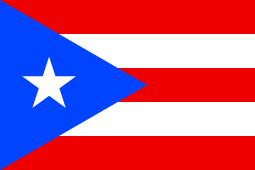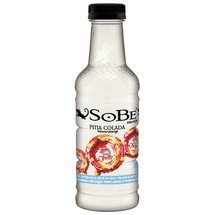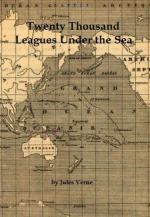 Puerto Rico this week requested $94 billion in immediate aid to recover from hurricanes Irma and Maria, which left most of the 3.4 million residents without power. The biggest share of the funds, $31 billion, were to be used to rebuild homes, with another $18 billion requested for the electric utility, Governor Ricardo Rossello said in a letter to President Donald Trump released Monday.
Puerto Rico this week requested $94 billion in immediate aid to recover from hurricanes Irma and Maria, which left most of the 3.4 million residents without power. The biggest share of the funds, $31 billion, were to be used to rebuild homes, with another $18 billion requested for the electric utility, Governor Ricardo Rossello said in a letter to President Donald Trump released Monday.
No preconceived notions here, but what gets our goat is the amount of money Puerto Rico demands from mainland taxpayers; $100,000,000,000. Side note, Puerto Ricans don’t pay Federal Income Tax. A back of the envelope calculation computes to $10,000 per individual – counting children. That is on top of the $50,000,000,000 we send annually to the island. Sending good money after bad does not compute, it never did.

Alex Witoslawski, American Renaissance, October 4, 2017
Puerto Ricans are blaming President Trump for the fact that two weeks after Hurricane Maria, their island is still a mess: power outages, flooding, fuel shortages, spotty cell service, washed out bridges, roads blocked by fallen trees. But who is really to blame for the island’s paralysis?
Consider this: Puerto Rico has a population of only 3.4 million but their elected government has run up a debt of over $70 billion and pension obligations of $50 billion. That’s more than $35,294 per resident and over 100 percent of GDP. Puerto Rico has already defaultedon a $58 million bond payment in 2016, due to its already-high taxes and unwillingness to cut government spending. It fell into crushing debt despite the $21 billion annually the island receives in aid from the United States, much of it spent on welfare programs such as Head Start, public housing, and food stamps. That’s over $6,000 per capita in federal welfare that the islanders consume. And due to the special status of the island, Puerto Ricans do not even pay federal income tax.
Borrowing and US handouts sustained the welfare habits of the people, but Puerto Rico left its infrastructure embarrassingly outdated. According to the Los Angeles Times, Puerto Rico’s electrical grid is so starved of physical and human capital that it suffers from power outages four-to-five times the average—even in good weather. Puerto Rico also failed to invest in infrastructure to protect against flooding. The island has few floodwalls and dangerously weak dams—a dam on the island cracked following the hurricane, forcing the evacuation of more than 70,000 people.
These problems were foreseeable and preventable, but liberals and Puerto Rican officials are blaming Donald Trump. Perhaps he is being too nice. Puerto Rico created its own problems; why should we be on the hook for them?

(Credit Image: © Erik Mcgregor/Pacific Press via ZUMA Wire)
After acquisition by the United States following the Spanish-American War in 1898, the island’s residents never integrated with Americans culturally, linguistically, or racially. Puerto Ricans are culturally Hispanic, racially a mix of Spanish colonists, African slaves and Taino natives, and most of them don’t speak any English. They may technically be United States citizens but they share little common history or ancestry with Americans and are clearly a nation that developed separately from our own. And what could indicate a clearer sense of alienation from the United States than the fact that Puerto Rico has its own Olympic team?
Puerto Ricans, meanwhile, have many gripes with what they perceive as their American overlords. For example, even before this latest hurricane-induced crisis, a major problem for Puerto Rico was their inability to conduct trade independently. According to U.S. law, goods must travel between Puerto Rican and mainland American ports on American-made vessels before they are exported or imported. This weakens Puerto Rico’s economy.
The best solution would be to let Puerto Rico become an independent country, free to make its own decisions and responsible for its own problems. This could be done amicably and generously. Since we pay the island tens of billions of dollars every year in welfare payments, we could easily pay off their debt and give them post-hurricane humanitarian aid as incentives to independence.
We could also offer remigration cash incentives for Puerto Ricans living in America who are willing to give up their U.S. citizenship and move to the island. This would not only be an opportunity for the Puerto Rican diaspora in the United States to reunite with their people, but also a great way to reverse the brain-drain. Over the past century, many of the more intelligent and hard-working Puerto Ricans moved to the mainland for better opportunities. The 2010 U.S. Census counted the number of Puerto Ricans living in America at 4.6 million, making it America’s second-largest Hispanic group after Mexicans. This represents a tremendous loss in cultural, economic, and human capital for the island.
Finally, we could offer military protection and economic advice for a couple decades. Chile took economic advice from free-market economists from the University of Chicago and the economy boomed. With the right advice and incentives, Puerto Rico could experience a similar economic rebound.
Separation would come with an expensive up-front price tag for us, but it would save Americans money in the long run and would give Puerto Rico full control over its culture and destiny.
CLICK HERE – Trump tweets that “federal aid won’t last forever.”
THE LATEST NEWS – previous post
The head of an international engineering firm in Puerto Rico said in an editorial Saturday that when the time came to send 50 of his engineers to help in the aftermath of Hurricane Maria, he bypassed local officials and went straight to FEMA.
The reason, said Jorge Rodriguez, the CEO of PACIV, in an editorial in the New York Post, is that “for the last 30 years, the Puerto Rican government has been completely inept at handling regular societal needs, so I just don’t see it functioning in a crisis like this one.”
Puerto Ricans elected a new governor last November but, Rodriguez charged, he was inexperienced and had never been responsible for a budget.
Gov. Ricardo Rossello cannot exactly count on those around him either, Rodriguez asserted.
“His entire administration is totally inexperienced and they have no clue how to handle a crisis of this magnitude,” said Rodriguez, who has a graduate business degree from Harvard Business School and was named a “Most Distinguished Graduate” by the University of Puerto Rico.
The WARNING FROM MR.Rodriguez who also had a word of caution for the U.S. Congress: “Watch out what relief funds you approve and let our local government handle. Don’t let the Puerto Rican government play the victim and fool you. They have no clue what they are doing, and I worry that they will mishandle anything that comes their way.”
AND WE ARE GOING TO POUR GOOD MONEY INTO PUERTO RICO! THE LAZY GOOD FOR NOTHING WELFARE LEACHES WILL BLOW IT LIKE THEY HAVE FOR THE PAST CENTURY! THIS IS THE WELFARE ISLAND.
Hey Guys (this includes Girls-no offense, but guys is now a generic term) do you, a taxpayer, want to pay for a stranger’s new house ? Bigger and better than the one you own or rent? Yeah, we are talking about those poor souls who lived in shanties down there in Puerto Rico. The ones with no flood insurance; to top it off 60% had no wind insurance. In the great majority of cases these houses (pmuds to say the least) were worth, maybe if you stretch it, $8000-$10,000. You have seen them before on the outskirts of Tijuana, Mexico – you say you don’t know what a pmud is, for heaven’s sake it is a dump spelled backward.
Well, let’s get to the point! The welfare island territory has leached off us long enough – now is their time to carry the water. We are sick and tired of being being sucked dry. They are clamoring for us to give them new houses for free, yes those who had theirs destroyed by Maria. These former homeowners are surging into FEMA’s offices. Of course they have plenty of time on their hand, none work. They rely on you, the taxpayer, for money. We are talking about the drug and gangster infested island. Audacity. They are also DEMANDING RESPECT. People with no job, but oh yeah, they are on SS disability, food stamps, welfare, medicare and whatever program they can suck dry. You don’t believe us? And the mayor of San Juan, she too opened her big fat trap. Trump had none of it.
 Puerto Rico’s bloated government also bears much of the blame. Around 30% of the territory’s jobs are in the public sector. Among other things, a big and coddled bureaucracy undermines Puerto Rico’s educational achievements in two ways. First, nearly half those on the education department’s payroll are not teachers; quality has fallen because of low accountability and mismanagement.
Puerto Rico’s bloated government also bears much of the blame. Around 30% of the territory’s jobs are in the public sector. Among other things, a big and coddled bureaucracy undermines Puerto Rico’s educational achievements in two ways. First, nearly half those on the education department’s payroll are not teachers; quality has fallen because of low accountability and mismanagement.
The Urban Dictionary defines LEACH; is a type of person who does their best to suck your personal wealth out of you, without actually causing pain, but just extreme annoyance after you notice it is happaning. Trump voters are sick and tired of being leached to death. Aren’t you?
As he walked through Aguadilla’s town hall recently, Mr Méndez, the mayor, boasted about each employee’s university or graduate-school credentials as he introduced them. The trouble, he says, is that “All they want to do is find security only. They have no ambition...Everybody wants to work for the government.” Manuel Reyes, of the Puerto Rico Manufacturers Association, also sees little hope that the government’s role will shrink. “There is no light at the end of the tunnel,” he says, “because we are still in denial.”
The federal government spent more than $2 billion to provide food stamps to residents of Puerto Rico in 2012, up to 25 percent of which is untraceable because it is distributed in cash and there is “no way to verify that funds are spent on food,” according to the U.S. Department of Agriculture (USDA). The funds are used to supply more than one-third of the population of Puerto Rico with food stamps. According to the U.S. Department of Agriculture (USDA), the Nutrition Assistance Program (NAP) for Puerto Rico, an unincorporated territory of the United States, received $2 billion in Nutrition Assistance Block Grants in fiscal year 2012. Folks this was back in 2012, today it is approaching $3 billion dollars. Why work when you can eat like the burger King.
Unemployment: 48% of those eligible to work don’t, counting those that don’t seek work the figure explodes to 55%. One in six working-age men in Puerto Rico are claiming disability benefits and the figure is expect to rise to 12% because of Maria. People from the Dominican Republic do many of the jobs in Puerto Rico that pay too little to attract the locals because the huge amount of government payments they collect while on the dole. What do Puerto Rico’s men do all day? Some get into trouble. But many others hang out in pleasant places that require little money, such as beaches, shopping malls and the armchairs in Borders bookstores. They also watch plenty of television. Satellite dishes sprout from many rooftops. People always have money for that bill.
PUERTO RICO wins the Leach award hands down. Advice to President Trump, “do not give them one red cent.” The government is defunct, the people who live there rely on the United States for handouts. They have reneged on $125 billion in debt. Their economy never was functional, relying on tax breaks to bribe mainland companies – for the most part big pharma – to relocated there. They determined their fate; they shall have to live with it. Estimates of damage are close to $100 billion, why bail them out? For the United States taxpayer this is a travesty. To bail out a bunch of low lifes on social security disability is an affront to those who work, to the American taxpayer. The highest percentage of Social Security disability cases are in Puerto Rico. Now we expect a million more (because of depression) to apply for disability. IT IS A WAY OF LIFE IN PUERTO RICO. Live high, but don’t work, on other peoples money. READ ON FOLKS AND YOU WILL BEGIN TO COMPREHEND THE REAL SITUATION IN PUERTO RICO.
Puerto Ricans who can’t speak English qualify as disabled for Social Security
Hundreds of Puerto Rico’s residents qualified for federal disability benefits in recent years because they lacked fluency in English, according to government auditors. The Social Security Administration’s inspector general questioned the policy this month in light of the fact that Spanish is the predominant language in the U.S. territory. Under Social Security regulations, individuals are considered less employable in the United States if they can’t speak English, regardless of their work experience or level of education. AND THAT IS NOT ALL!
Puerto Rico is red meat, let the vultures come in and devour it. Clean it up and make it what it can be. But no this won’t happen because Big Government will get involved continuing their largess. LET THEM SINK OR SWIM. Why should the mainland BAIL them out?
According to the Consolidated Federal Funds Report compiled by the U.S. Census Bureau, Puerto Rico has received more than $21 billion annually in federal aid from the United States. A substantial portion of this amount is earmarked for public welfare, including funding educational programs (such as Head Start), subsidized housing programs (such as (Section 8 and public housing projects), and a food stampsystem called the Nutrition Assistance for Puerto Rico program.
Supplemental Security Income (SSI) is a federal entitlement program that provides cash assistance to low-income aged, blind, and disabled individuals. Individuals receiving SSI benefits are eligible for Medicaid coverage in all states except “section 209(b)” states, which have opted to use their more restrictive 1972 criteria in determining Medicaid eligibility for SSI recipients. Section 209(b) of the 1972 amendments to the Social Security Act allowed states the option of continuing to use their own eligibility criteria in determining Medicaid eligibility for the elderly and disabled rather than extending Medicaid coverage to all of those individuals who qualify for SSI benefits. As of 2001, eleven states (Connecticut, Hawaii, Illinois, Indiana, Minnesota, Missouri, New Hampshire, North Dakota, Ohio, Oklahoma, and Virginia) had elected the “209(b)” option to apply their 1972 eligibility criteria to aged or disabled individuals receiving SSI benefits for purposes of determining Medicaid
PUERTO RICO – FOOD STAMP NATION -previous post
One third – 33% of Puerto Rico’s population is on food stamps costing the United States over $2 billion per year. Puerto Rico had a higher public assistance participation rate (5.9 percent) than the national average (2.9 percent), this means that twice as many per capita receive welfare. For those who stay, rich welfare benefits provide a disincentive to work. A household of three can receive $1,743 per month in food stamps, Medicaid, utility subsidies and welfare compared to minimum-wage take-home pay of $1,159. Employers are required to provide 15 days of vacation and 12 sick days annually and a $600 Christmas bonus. Government employees make up a quarter of the island’s workforce.
A more appropriate name should be Puerto Welfare.
PUERTO RICO THE SOCIALIST PARADISE OF THE CARIBBEAN DROWNING IN DEBT
The Greek debacle has been the focus of late on its on again-off again debt restructuring, but that doesn’t mean that the troubles in Puerto Rico are playing second fiddle. Puerto Rico is on the hook for close to $100 billion. That is a boat load of pina coladas.  Just in case you haven’t been initiated in the Puerto Rico way of doing business we bring you their number one life saver, welfare and social security. Puerto Rico is a disability fraud paradise. The top 10 U.S. zip codes tied to people receiving disability benefits, nine are in Puerto Rico.
Just in case you haven’t been initiated in the Puerto Rico way of doing business we bring you their number one life saver, welfare and social security. Puerto Rico is a disability fraud paradise. The top 10 U.S. zip codes tied to people receiving disability benefits, nine are in Puerto Rico. 
The sharks are circling the waters in the hope of default if and when it happens. The rich island has a dark journey ahead, tourism is in the tank, the economy is in a perpetual depression, drugs are rampant and most of all the government will not do what needs to be done; cut bait.
But Puerto Rico is part of the United States and is a metaphor for liberal bastions like Illinois and Connecticut, both drowning the sea of debt. Utmost on the minds of the Puerto Rican is not the rising sea levels, but their share of the islands IOU’s. By the way, in case you didn’t notice, Puerto Rico has a population similar to Connecticut, 3,5 million or simply put a debt of $22,000 for each of its citizens. And true to form the Commonwealth’s economy has slowly reached the point of no return being sucked down by a giant whirlpool, even Captain Nemo can’t save this one.

